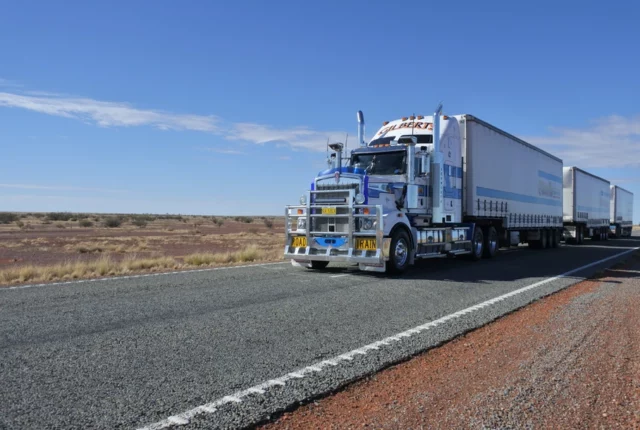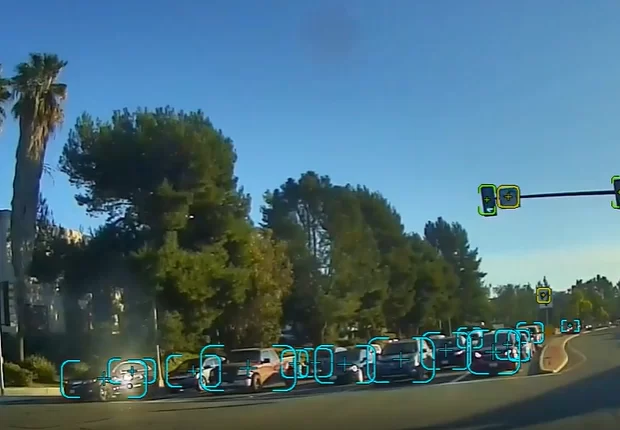
6 Tips on Achieving Driver Buy-in for AI Dash Cameras
AI dashboard cameras are proven to be extremely effective at not only reducing costs for fleet operations, but more importantly, keeping drivers safer while on the road. However, the use of dashboard cameras often comes with some hesitation from the drivers themselves as these systems can appear to be further attempts at micro-managing drivers by recording everything they do. And this hesitation on the part of drivers is understandable, especially when they may not be up to date on how exactly systems like Positioning Universal’s PosiVision EdgeTM AI Camera work.
So, before signing the dotted line on dashboard cameras, it is very important to be intentional about how to bring in these great assets for fleet safety and present them to your drivers. There are many ways to do this correctly, and we have six tips to help guide your thinking.
Lead with Transparency
One of the most important steps in getting buy-in on anything is to be transparent. As a fleet manager, it is crucial to always lead with transparency whenever introducing a change to existing operations. And in this case, when adding dashboard cameras, transparency with drivers is critical. Gather your drivers and make sure to explain the “why” behind your decision to introduce dashboard cameras; be sure to emphasize that it is to increase safety and help the drivers in their day-to-day operations. Being transparent allows you not only to gain more trust from the drivers themselves —because they are kept in the loop before any changes are implemented— but to be proactive as a fleet manager in crafting the narrative behind the decision for driver cameras and the benefits they bring to fleet operations as a whole. Without this transparency, drivers may let their thoughts run astray and receive the news much more negatively than they should. Being transparent allows for the opportunity to erase any negative assumptions that drivers may have before the cameras are installed.
Explain the Technology

Ask for Driver Feedback
To build on leading with transparency, allowing space for driver feedback before device installation is a great way to gain more buy-in. Being transparent before the decision is made shows you respect your drivers and value them, and asking for their feedback and opinions before the decision goes that much further in showing you respect and value their opinions on the operations of the fleet. Everyone wants to be heard when a decision can affect their day-to-day, and asking for their feedback and opinion will help win over drivers, as they are now included in that decision-making process. Asking for feedback from the people who are actually on the road provides invaluable information that can be used to make the most informed decisions.
In addition to asking for their input before installation, feedback from drivers should continue to be consistent after the adoption of the new technology. Having consistent opportunities for drivers to voice their opinions, and just as important, respecting their opinions, is crucial to keeping drivers motivated and positive about the change. And as mentioned before, it is simply a great opportunity to improve the dashboard camera program.
Recognize Good Driving

Another important step in gaining driver buy-in is to ensure that the program is dedicated to recognizing good driving and positively rewarding it, not just on calling out bad driving and punishing drivers for their errors. This program should be centered around incentivizing good driving and appreciating all the great work your drivers do each and every day. Having great features like driver scoring should be used as a tool for achieving positive goals. By rewarding and focusing on the positives, your drivers will feel less worried about being monitored by the cameras. And if a driver is performing poorly, the mindset should still focus on the aspects that driver does well, and then integrate opportunities for improvement within that framework. As with any program, people respond better to positive goals to strive for, not baselines to barely meet.
Lead with Visibility
One great feature about having these videos stored in the cloud is that many people can see them, wherever they are. Fleet managers can use that to their advantage when it comes to dashboard cameras by actually showing the drivers their footage while on the road. This gives drivers the opportunity to see areas of improvement for themselves and make those changes accordingly. For example, if a driver is flagged with multiple stop sign violations, just seeing video footage of the occurrences lets them know to stop a little longer before proceeding. It is just like watching film in sports. Every great team does it.
Empathize
The last tip to getting drivers to buy in on a dashboard camera program is very simple: empathize with them. As mentioned before, people want more than anything to be respected and valued, and doing things like asking their opinion and being transparent really helps them feel that. Being empathetic to the situation and their concerns drives home the idea that you are all one team, and every voice is not only heard, but respected and valued. As a fleet manager it is critical to show that you understand your drivers’ concerns and truly want what is in their best interest. Showing empathy to the drivers will confirm that, and ultimately make drivers much more comfortable with the decision to adopt the new technology.
Conclusion
All in all, using transparency, positive thinking and empathy are all terrific ways to get drivers to buy in on a program like the use of dashboard cameras. While they can initially seem a nuisance, these devices are ultimately there to help drivers feel more comfortable and safer on the road, not less. So, as a fleet manager, you can utilize these tips to drive that point home and ensure that the change will be a positive one for the safety of the fleet as a whole.





